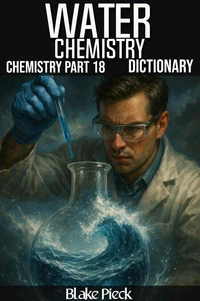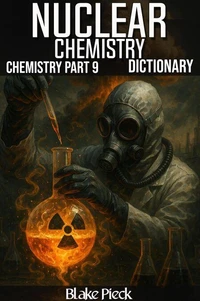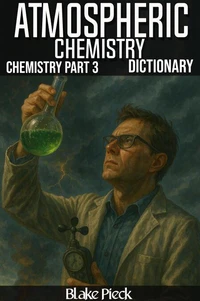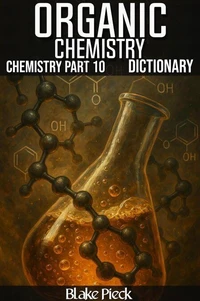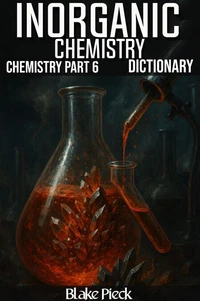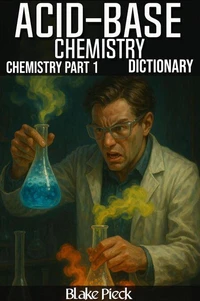Polymer Chemistry - Chemistry Part 12 Dictionary. Grow Your Vocabulary
Par :Formats :
Disponible dans votre compte client Decitre ou Furet du Nord dès validation de votre commande. Le format ePub est :
- Compatible avec une lecture sur My Vivlio (smartphone, tablette, ordinateur)
- Compatible avec une lecture sur liseuses Vivlio
- Pour les liseuses autres que Vivlio, vous devez utiliser le logiciel Adobe Digital Edition. Non compatible avec la lecture sur les liseuses Kindle, Remarkable et Sony
 , qui est-ce ?
, qui est-ce ?Notre partenaire de plateforme de lecture numérique où vous retrouverez l'ensemble de vos ebooks gratuitement
Pour en savoir plus sur nos ebooks, consultez notre aide en ligne ici
- FormatePub
- ISBN8230029687
- EAN9798230029687
- Date de parution01/09/2025
- Protection num.pas de protection
- Infos supplémentairesepub
- ÉditeurIndependently Published
Résumé
Polymer chemistry studies the molecules that are built from repeating units and the remarkable materials that arise from them. It explores how monomers join into chains, how branching and cross-linking affect properties, and how synthesis methods create plastics, fibers, rubbers, and advanced composites. From everyday packaging to cutting-edge biomedical devices, this field demonstrates how chemistry shapes the materials of modern life.
Within the wider discipline of chemistry, polymer science bridges organic, inorganic, and physical principles. It explains how chemical structure determines flexibility, strength, conductivity, and resilience. By tracing the connection between molecular design and large-scale performance, polymer chemistry links laboratory innovation to industry and technology. This dictionary brings together the essential vocabulary of polymer chemistry in a structured and accessible format.
Entries cover polymerization methods, chain-growth and step-growth reactions, thermal behavior, rheology, and the terminology of characterization techniques. Each definition is developed with context that supports students in study, guides educators in teaching, and provides professionals with a reliable reference for research and application. Learning through a dictionary reinforces understanding of precise terminology, which is crucial in a field where small changes in structure can produce dramatically different materials.
By moving step by step through organized entries, readers gain confidence and depth in their knowledge. With polymers at the core of industries ranging from medicine to electronics, mastery of this language strengthens both academic development and professional advancement.
Within the wider discipline of chemistry, polymer science bridges organic, inorganic, and physical principles. It explains how chemical structure determines flexibility, strength, conductivity, and resilience. By tracing the connection between molecular design and large-scale performance, polymer chemistry links laboratory innovation to industry and technology. This dictionary brings together the essential vocabulary of polymer chemistry in a structured and accessible format.
Entries cover polymerization methods, chain-growth and step-growth reactions, thermal behavior, rheology, and the terminology of characterization techniques. Each definition is developed with context that supports students in study, guides educators in teaching, and provides professionals with a reliable reference for research and application. Learning through a dictionary reinforces understanding of precise terminology, which is crucial in a field where small changes in structure can produce dramatically different materials.
By moving step by step through organized entries, readers gain confidence and depth in their knowledge. With polymers at the core of industries ranging from medicine to electronics, mastery of this language strengthens both academic development and professional advancement.
Polymer chemistry studies the molecules that are built from repeating units and the remarkable materials that arise from them. It explores how monomers join into chains, how branching and cross-linking affect properties, and how synthesis methods create plastics, fibers, rubbers, and advanced composites. From everyday packaging to cutting-edge biomedical devices, this field demonstrates how chemistry shapes the materials of modern life.
Within the wider discipline of chemistry, polymer science bridges organic, inorganic, and physical principles. It explains how chemical structure determines flexibility, strength, conductivity, and resilience. By tracing the connection between molecular design and large-scale performance, polymer chemistry links laboratory innovation to industry and technology. This dictionary brings together the essential vocabulary of polymer chemistry in a structured and accessible format.
Entries cover polymerization methods, chain-growth and step-growth reactions, thermal behavior, rheology, and the terminology of characterization techniques. Each definition is developed with context that supports students in study, guides educators in teaching, and provides professionals with a reliable reference for research and application. Learning through a dictionary reinforces understanding of precise terminology, which is crucial in a field where small changes in structure can produce dramatically different materials.
By moving step by step through organized entries, readers gain confidence and depth in their knowledge. With polymers at the core of industries ranging from medicine to electronics, mastery of this language strengthens both academic development and professional advancement.
Within the wider discipline of chemistry, polymer science bridges organic, inorganic, and physical principles. It explains how chemical structure determines flexibility, strength, conductivity, and resilience. By tracing the connection between molecular design and large-scale performance, polymer chemistry links laboratory innovation to industry and technology. This dictionary brings together the essential vocabulary of polymer chemistry in a structured and accessible format.
Entries cover polymerization methods, chain-growth and step-growth reactions, thermal behavior, rheology, and the terminology of characterization techniques. Each definition is developed with context that supports students in study, guides educators in teaching, and provides professionals with a reliable reference for research and application. Learning through a dictionary reinforces understanding of precise terminology, which is crucial in a field where small changes in structure can produce dramatically different materials.
By moving step by step through organized entries, readers gain confidence and depth in their knowledge. With polymers at the core of industries ranging from medicine to electronics, mastery of this language strengthens both academic development and professional advancement.














